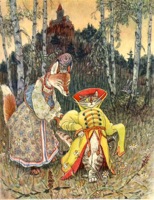Difference between revisions of "Folklore"
(Created page with 'File:lighterstill.jpgright|frame *[http://en.wikipedia.org/wiki/19th_century 1846] ==Definitions== *1: traditional customs, [[ta...') |
m (Text replacement - "http://" to "https://") |
||
| Line 1: | Line 1: | ||
[[File:lighterstill.jpg]][[File:Russianfox_-_Version_2.jpg|right|frame]] | [[File:lighterstill.jpg]][[File:Russianfox_-_Version_2.jpg|right|frame]] | ||
| − | *[ | + | *[https://en.wikipedia.org/wiki/19th_century 1846] |
==Definitions== | ==Definitions== | ||
*1: [[traditional]] [[customs]], [[tales]], sayings, [[dances]], or art forms preserved among a people | *1: [[traditional]] [[customs]], [[tales]], sayings, [[dances]], or art forms preserved among a people | ||
| Line 7: | Line 7: | ||
*3: an often unsupported notion, [[story]], or saying that is widely circulated | *3: an often unsupported notion, [[story]], or saying that is widely circulated | ||
==Description== | ==Description== | ||
| − | '''Folklore''' (or ''lore'') consists of [[legends]], [[music]], [[oral history]], [[proverbs]], [[jokes]], popular [[beliefs]], fairy tales, stories, tall tales, and [[customs]] included in the [[traditions]] of a [[culture]], subculture, or group. It also includes the set of [[practices]] through which those expressive [[genres]] are [[shared]]. The study of folklore is sometimes called [ | + | '''Folklore''' (or ''lore'') consists of [[legends]], [[music]], [[oral history]], [[proverbs]], [[jokes]], popular [[beliefs]], fairy tales, stories, tall tales, and [[customs]] included in the [[traditions]] of a [[culture]], subculture, or group. It also includes the set of [[practices]] through which those expressive [[genres]] are [[shared]]. The study of folklore is sometimes called [https://en.wikipedia.org/wiki/Folkloristics folkloristics], and people who study folklore are sometimes referred to as "folklorists". The English antiquarian [https://en.wikipedia.org/wiki/William_Thoms William Thoms] introduced the word "folklore" in a letter published in the London journal ''[https://en.wikipedia.org/wiki/Athenaeum_(magazine) The Athenaeum]'' in 1846. In usage, there is a [[continuum]] between folklore and [[mythology]]. [https://en.wikipedia.org/wiki/Stith_Thompson Stith Thompson] (1885-1976) made a major attempt to index the motifs of both folklore and mythology, providing an outline for classifying new motifs, and within which [[scholars]] can keep track of all older motifs. |
| − | Folklorist [ | + | Folklorist [https://en.wikipedia.org/wiki/William_Bascom William Bascom] states that folklore has many cultural aspects, such as allowing for [[escape]] from societal [[consequences]]. In addition, folklore can also serve to validate a culture ([[romantic]] [[nationalism]]), as well as transmit a culture's [[morals]] and [[values]]. Folklore can also be the root of many cultural types of [[music]]. Country, blues, and bluegrass all originate from American folklore. Examples of artists which have used folkloric themes in their music would be: Bill Monroe, [https://en.wikipedia.org/wiki/Flatt_and_Scruggs Flatt and Scruggs], Old Crow Medicine Show, [https://en.wikipedia.org/wiki/Jim_Croce Jim Croce], and many others. Folklore can also be used to assert social pressures, or relieve them, for example in the case of [[humor]] and [[carnival]]. |
| − | In addition, folklorists study [[medical]], [[supernatural]], [[religious]], and [[political]] [[belief]] systems as an essential, often unspoken, part of expressive [[culture]].[ | + | In addition, folklorists study [[medical]], [[supernatural]], [[religious]], and [[political]] [[belief]] systems as an essential, often unspoken, part of expressive [[culture]].[https://en.wikipedia.org/wiki/Folklore] |
==See also== | ==See also== | ||
*'''''[[Oral Tradition]]''''' | *'''''[[Oral Tradition]]''''' | ||
Latest revision as of 00:16, 13 December 2020
Definitions
- 1: traditional customs, tales, sayings, dances, or art forms preserved among a people
- 2: a branch of knowledge that deals with folklore
- 3: an often unsupported notion, story, or saying that is widely circulated
Description
Folklore (or lore) consists of legends, music, oral history, proverbs, jokes, popular beliefs, fairy tales, stories, tall tales, and customs included in the traditions of a culture, subculture, or group. It also includes the set of practices through which those expressive genres are shared. The study of folklore is sometimes called folkloristics, and people who study folklore are sometimes referred to as "folklorists". The English antiquarian William Thoms introduced the word "folklore" in a letter published in the London journal The Athenaeum in 1846. In usage, there is a continuum between folklore and mythology. Stith Thompson (1885-1976) made a major attempt to index the motifs of both folklore and mythology, providing an outline for classifying new motifs, and within which scholars can keep track of all older motifs.
Folklorist William Bascom states that folklore has many cultural aspects, such as allowing for escape from societal consequences. In addition, folklore can also serve to validate a culture (romantic nationalism), as well as transmit a culture's morals and values. Folklore can also be the root of many cultural types of music. Country, blues, and bluegrass all originate from American folklore. Examples of artists which have used folkloric themes in their music would be: Bill Monroe, Flatt and Scruggs, Old Crow Medicine Show, Jim Croce, and many others. Folklore can also be used to assert social pressures, or relieve them, for example in the case of humor and carnival.
In addition, folklorists study medical, supernatural, religious, and political belief systems as an essential, often unspoken, part of expressive culture.[1]
